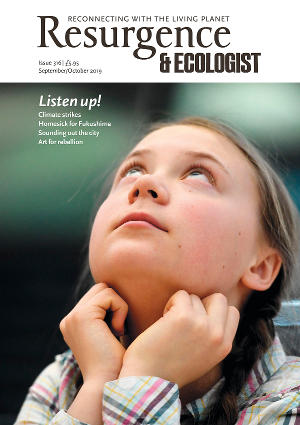This is your wake-up call. Climate chaos is happening right now, and there’s no time to waste. David Wallace-Wells’s book The Uninhabitable Earth is an urgent, fact-packed call to action. As deputy editor of New York magazine, Wallace-Wells is primarily a storyteller. He doesn’t claim to be an activist, a scientific boffin or even an environmentalist. But he has thoroughly researched his subject, and his fresh take on the latest climate science, predictions and solutions is robust, comprehensive, and possibly too close to sci-fi for comfort.
What he does so beautifully is something few communicators have managed with this tricky subject: he makes climate chaos relatable and tangible. Natural disasters, from floods to hurricanes to the polar vortex, are becoming a more frequent feature of our weather than ever before. Wallace-Wells connects the reader directly to current extreme scenarios and builds a picture of what climate change might look like with two, four or even eight degrees of global warming.
He explains that climate change is not a binary issue – it’s a function. It gets worse over time as long as we continue to emit greenhouse gases, and every increase in temperature brings more climate suffering.
This book equips a new generation with the knowledge to make informed decisions, and the impulse to voice the need for dramatic and global change to put the brakes on fossil capitalism and avert catastrophe. Wallace-Wells distils complex science into 12 easy-to-read chapters about the elements of chaos, and disparate issues from heat death to climate conflict and economic collapse share a common thread. Ocean acidification, air pollution, water shortages, flooding and particulate pollution are all part of the same problem.
A country’s carbon footprint might be very different from the climate impact it is experiencing – geopolitics isn’t fair. While some of the book is a little US-centric, Wallace-Wells does well in putting across the global perspective: India takes the brunt of the western world’s obsession with fossil fuels, and, as a rising power, China has the biggest motivation to create positive change.
Climate science isn’t sugar-coated, and Wallace-Wells doesn’t err on the side of caution. He explains that we are already living outside the climate range that first gave rise to human life. But that’s not to say there’s no hope. He remains optimistic that, as a species, we have the skills to solve this – but our future lies in the balance. He states: “We are facing an existential threat to the species and we have the responsibility of solving it ourselves. You and I are going to watch our species try to save itself.”
So it’s dramatic, but it’s certainly not all doom and gloom – yet. There is hope, and existing technology for carbon capture could lend us some time if we act quickly. Wallace-Wells argues that climate change is much more of a political and socio-economic issue than purely an environmental one; now is our chance to insist that global leaders reframe geopolitics, think about the long-term implications, and make a stand. As individual citizens, we are all decision makers, and the power lies with us to make our votes count.
More than half a century after Rachel Carson published Silent Spring, The Uninhabitable Earth provides a necessary snapshot into our current crisis. It’s accessible, it’s mainstream, and it could well become a game-changer.







